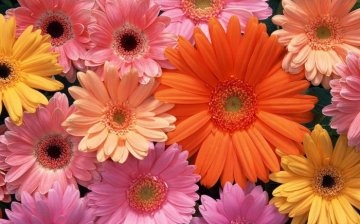Gerbera garden: growing and care
Reminiscent of a large colored chamomile, garden gerbera is a perennial plant of the Asteraceae family. It pleases with flowering all summer long, but it can survive the winter only in a very warm climate, if it is well covered. The only way to keep it in the middle lane in winter is to dig it out in the fall with a lump of earth and store it in a cool (7-10 degrees) room that is regularly ventilated. The garden gerbera is often grown as an annual plant, but the flowering period is significantly reduced in this case.
Garden gerbera needs well-lit and protected places on the site. It is planted in the spring in a well-drained warm soil, after having introduced an inorganic complex fertilizer. It is also necessary to disinfect the soil, the roots of the plant are susceptible to fungal diseases. The plant needs abundant watering during the growing season and rarely during winter storage. But it does not tolerate waterlogging and can die because of it. Water should be used soft and warm, watered strictly at the root. When it gets on the leaves, water flows into the leaf rosette and causes it to rot.
The most common way of reproduction of garden gerbera is vegetative, by dividing the bush. In spring, the bushes are divided into shoots with 2-3 leaves, which, when planted, are buried so that the rosette of leaves protrudes about 1 cm above the ground. You can propagate the garden gerbera and seeds. To ensure an early onset of flowering, they are sown in January-February in light, well-drained soil. Seedlings usually appear in a couple of weeks. Seedlings are planted when they have 3-4 true leaves.




Gerbera is one of my favorite flowers, I plant it in the front garden every year and I can say that it will perfectly decorate any flower bed. And in bouquets, gerberas look very beautiful. I take care of them like most plants, I don't have any difficulties.